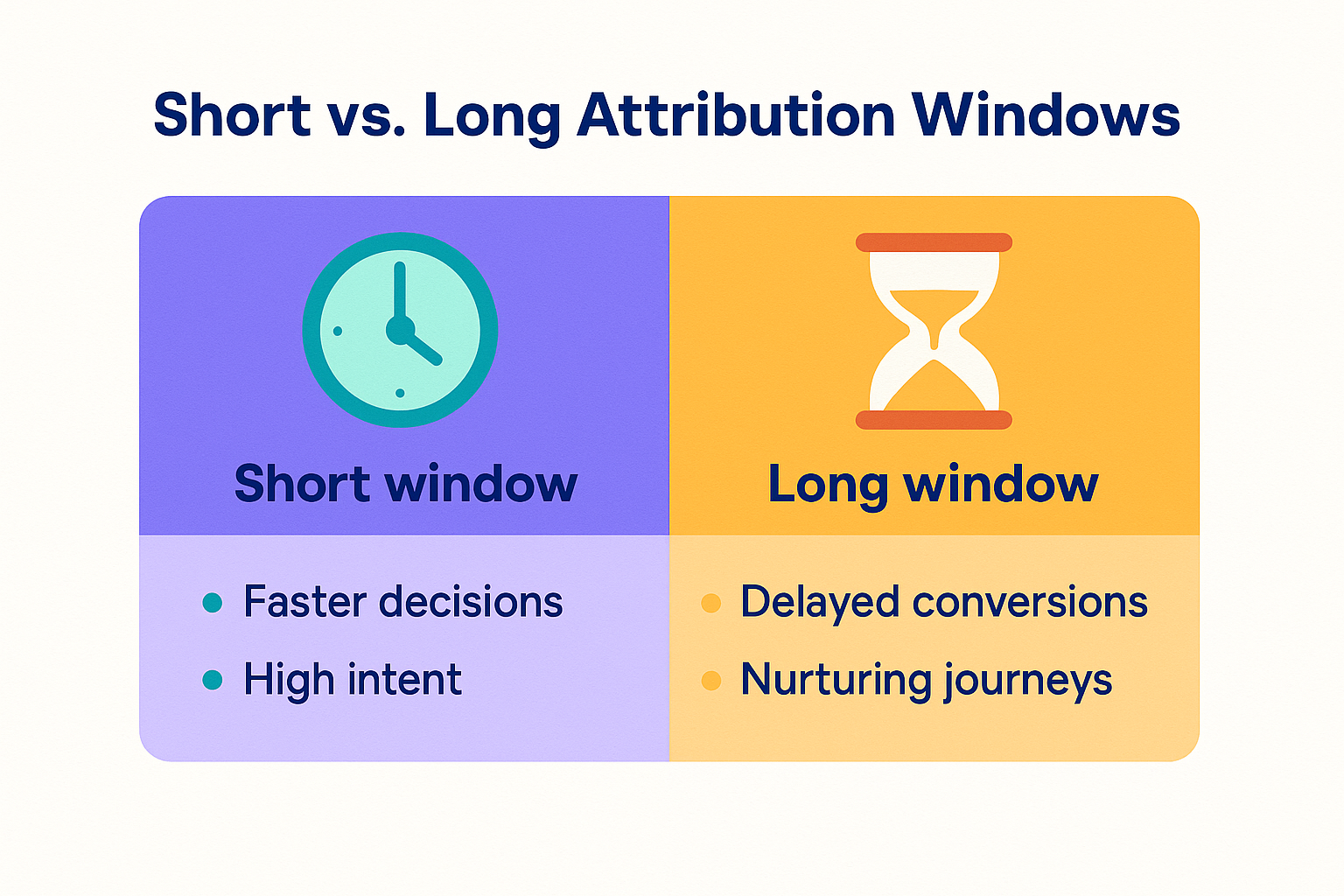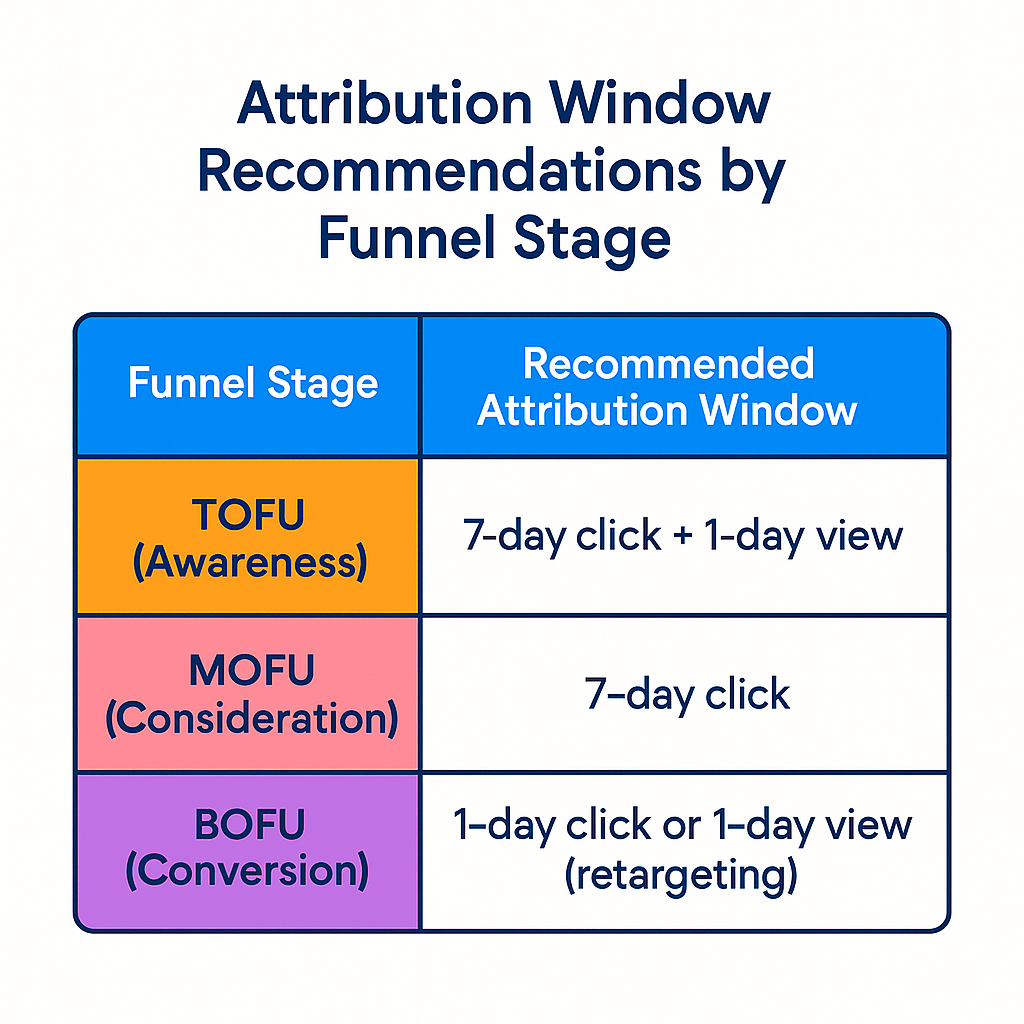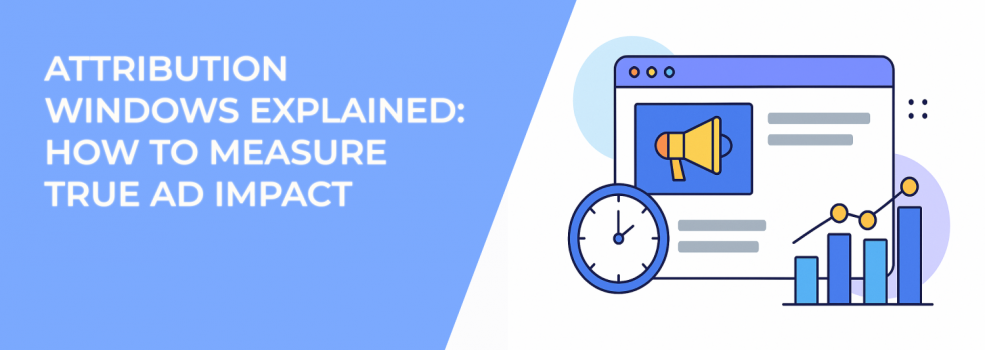In the fast-moving world of digital advertising, measuring performance accurately is non-negotiable. Yet, many marketers overlook one critical setting that affects nearly every metric they track: the attribution window.
Let’s clarify what it is, why it matters, and how you can use it to make smarter advertising decisions.
What Is an Attribution Window?
An attribution window is the timeframe during which a platform can credit an ad for a conversion. For example, if your Facebook campaign uses a 7-day click window, any conversion within seven days of an ad click will be attributed to that ad.
Most platforms support several options:
-
1-day click;
-
7-day click;
-
1-day view;
-
7-day click + 1-day view (commonly used on Meta).
Understanding these windows is vital because changing them can significantly shift your campaign’s performance metrics. If you’re running multiple channels or want a clearer view of return on ad spend (ROAS), you need to know exactly what’s being credited — and when.
For a breakdown of Meta’s default attribution settings and how to adjust them for better accuracy, see Facebook Attribution Window Explained.
Why Attribution Windows Matter More Than You Think
An ad might generate a conversion instantly or influence a customer who returns days later through a different channel. Your attribution settings determine who gets credit. That makes this window far more than a technicality — it's a lens through which you interpret results.

Consider this: short windows (like 1-day click) highlight high-intent actions, great for testing creatives or cold audiences. Longer windows (like 28-day click) are better suited to longer consideration cycles or complex offers, such as B2B services.
A mismatch between your attribution window and actual buyer behavior can either inflate results or bury winning campaigns.
To optimize your campaign settings more holistically, check out Meta Ad Campaign Objectives Explained.
Choosing the Right Attribution Window
There’s no one-size-fits-all answer.

Instead, look at your:
-
Sales cycle length: Faster decisions favor shorter windows;
-
Offer type: Trial offers or e-commerce products may convert within a day, whereas service-based businesses often require longer;
-
Customer behavior: Use Google Analytics or CRM data to see how long users typically take to convert.
Also, think about how your audience is built. If you're working with warm traffic through remarketing, a shorter click window might suffice. For top-of-funnel awareness campaigns, view-through attribution could be valuable.
To fine-tune your audiences and ensure your attribution settings align with their intent, explore How to Define a Target Audience for Marketing.
Avoiding Common Pitfalls
Marketers often rely too heavily on default settings. Doing so can create blind spots:
-
Double attribution across platforms;
-
Over-crediting view-through impressions;
-
Misjudging ROAS or CPA when windows shift mid-campaign.
Make sure you pair platform reporting with third-party tools like GA4 or attribution dashboards to get a full-funnel view. If you’re struggling to reconcile data across channels or noticing inconsistency in reported conversions, read Facebook Ads Not Converting: How To Fix It.
Final Thought: Attribution Is Strategy, Not Just Settings
Your attribution window isn’t just a reporting preference. It directly impacts optimization, budget allocation, and campaign structure. If you’re only looking at last-click performance or default reports, you're likely missing what’s truly driving results.
So before scaling your next campaign, ask yourself: are you giving your ads a fair shot at credit — or are you measuring in a vacuum?
For more context on how targeting and delivery settings interact with attribution and performance, we recommend Facebook Ad Targeting 101.

